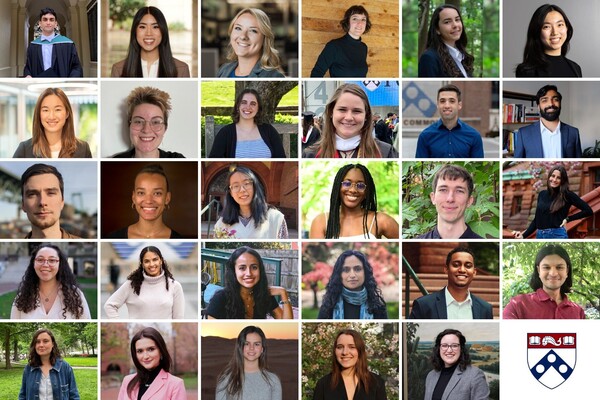
Twenty-nine Penn students, recent graduates, and alumni have been offered Fulbright grants for the 2023-24 academic year, from left: (top row) Anuj Amin, Ella Atsavapranee, Rebecca Bean, Rachael (Viola) Bordon, Erin Brennan, Mia Cheung; (second row) Allison Chou, Teresa Christensen, Sabrina de Brito, Ashley Fuchs, Zacharia Hamdi, Nilesh Kavthekar; (third row) Vincent Kelley, Lauren Lamb, Esther Lee, Beyoncé Lightfoot, Colin Lodewick, Lea Mangifesta; (fourth row) Vanessa Martinez Penn, Anya Miller, Marissa Mojena, Priyamvada Nambrath, Trevor Núñez, Sriram Palepu; (bottom row) Kyra Schulman, Laila Shadid, Ingrid Sotelo, Sally Thomas, and Erin Wrightson.
(Images: Courtesy of the Center for Undergraduate Research and Fellowships)